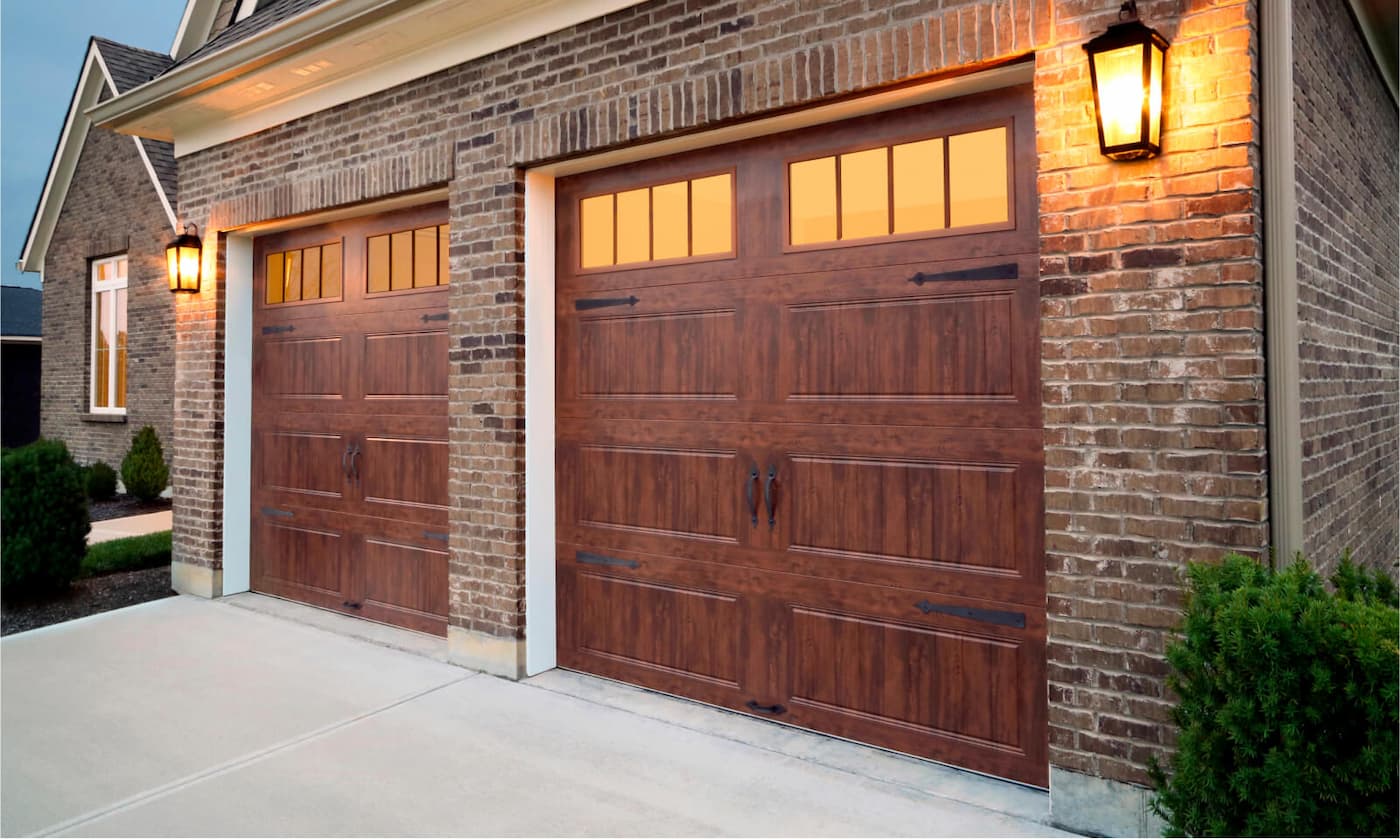Introduction
Calgary winters are notoriously harsh, with freezing temperatures, snow, and ice creating unique challenges for homeowners. While most people focus on preparing their homes and vehicles for the cold season, the garage door is often overlooked. Yet, it’s one of the most frequently used entry points to your home and plays a critical role in keeping your property safe and warm. Unfortunately, garage doors are especially vulnerable to winter-related issues. The good news is that with a little foresight and proper maintenance, you can prevent most of these problems before they turn into costly repairs.
Why Winter Affects Garage Doors So Severely
Cold weather in Calgary doesn’t just bring inconvenience—it creates real, physical changes in the way your garage door system operates. When temperatures drop below freezing, metal parts like springs, tracks, and rollers contract, making them less flexible and more prone to snapping under pressure. This is why many homeowners experience broken springs or sluggish doors in the middle of winter. At the same time, snow and ice buildup around the base of the door can prevent it from opening smoothly or even cause it to stick to the ground.
Another major concern is moisture combined with road salt, which often gets tracked into garages by vehicles. Over time, this mixture can accelerate rust and corrosion on the door’s hardware, weakening essential components and shortening their lifespan. Even the weatherstripping and rubber seals that protect your garage door from drafts can crack, freeze, or wear down when exposed to Calgary’s harsh winds and icy temperatures. When these seals fail, your garage loses heat, forcing your home’s heating system to work harder and driving up energy costs.
Recognizing these risks early is the foundation of prevention. By understanding how winter conditions affect your garage door, you can take proactive steps—like regular inspections, lubrication, and timely repairs—to avoid being caught off guard by a breakdown during the coldest months of the year.
Common Garage Door Problems in Calgary Winters
Before diving into prevention strategies, it’s important to recognize the most frequent garage door problems Calgary homeowners encounter during the coldest months of the year. These issues not only cause inconvenience but can also compromise the safety and efficiency of your entire garage system.
Frozen garage door seals – When snow melts and refreezes at the base of your garage, the moisture can cause the rubber seal to stick firmly to the ground. Trying to force the door open in this situation may tear the seal or even strain the opener motor, leading to bigger repair needs.
Stiff or broken springs – Your garage door springs are under constant tension, doing most of the heavy lifting every time you open or close the door. In freezing temperatures, the metal becomes brittle and more likely to snap. A broken spring not only immobilizes your door but also poses a serious safety hazard if it fails suddenly.
Thickened lubricant – Many homeowners don’t realize that standard lubricants react to temperature changes. In subzero weather, grease and oil can thicken, gumming up the rollers, hinges, and tracks. This leads to sluggish door movement, grinding noises, and unnecessary strain on the opener.
Misaligned tracks – Calgary’s extreme temperature fluctuations can cause metal garage door tracks to expand and contract. Over time, this can lead to slight misalignments, preventing the door from opening or closing smoothly. Even a small misalignment can place stress on the rollers and opener, accelerating wear.
Remote control issues – Cold weather doesn’t just affect mechanical parts—it also impacts electronics. The batteries in your garage door remote and keypad tend to drain faster in freezing temperatures, leaving you locked out at the worst possible time if spares aren’t handy.
By understanding these common winter problems, you’ll be better prepared to spot early warning signs and take proactive steps to keep your garage door working reliably all season long.
Tips to Prevent Garage Door Problems This Winter

1. Keep the Tracks and Rollers Clean
Snow, salt, and debris can accumulate in your garage door tracks, preventing smooth movement. Regularly wipe them down and remove obstructions. For rollers, inspect for wear and tear and replace them if necessary.
2. Lubricate Moving Parts Properly
Cold weather thickens grease, which can gum up your system. Use a silicone-based lubricant on hinges, springs, and rollers to ensure they stay flexible and functional, even in subzero conditions.
3. Protect and Inspect the Weatherstripping
Your weatherstripping keeps cold air out and prevents heat loss. During winter, check for cracks or damage. If the seal freezes to the ground, avoid forcing the door open as it can tear the rubber. Instead, gently melt the ice with warm water or use a safe de-icer.
4. Test and Maintain the Springs
Garage door springs do the heavy lifting, but they’re under constant tension and become more brittle in the cold. Inspect them regularly for signs of rust, stretching, or weakness. If you notice issues, call a professional—spring repairs can be dangerous without the right tools.
5. Check Remote and Keypad Batteries
The cold can drain batteries quickly. Always keep spare batteries on hand for remotes and keypads to avoid being locked out on a frigid morning.
6. Prevent Moisture and Ice Buildup
Moisture is one of the biggest threats during Calgary winters. Clear snow away from the garage door base to reduce ice buildup, and make sure gutters and downspouts direct water away from the garage entrance.
7. Schedule a Professional Winter Tune-Up
While DIY maintenance is useful, a professional inspection can catch problems you might miss. Garage door technicians can adjust tension, align tracks, and test safety systems to ensure your door operates smoothly throughout the winter.
The Benefits of Winter-Proofing Your Garage Door
Taking preventive steps isn’t just about avoiding the hassle of a stuck garage door in the middle of a Calgary blizzard—it’s about protecting your investment and ensuring your home runs smoothly throughout the year. A little care now can pay off in several important ways:
1. Extends the lifespan of your garage door system.
Regular maintenance, like cleaning, lubricating, and inspecting parts, helps reduce wear and tear. By keeping springs, rollers, and tracks in good shape, you prevent small issues from escalating into major damage, which means your garage door can last many years longer.
2. Improves energy efficiency by keeping cold drafts out.
Damaged seals and weatherstripping allow freezing air to creep in, making your garage and even adjoining rooms harder to heat. Properly maintaining and replacing these components helps your garage door act as an insulator, cutting down on wasted energy and lowering heating bills during Calgary’s long winters.
3. Reduces repair costs by addressing issues early.
Catching a misaligned track or a stiff spring before it completely fails can save you from expensive emergency repairs. Preventive care is almost always cheaper than waiting until something breaks and requires immediate professional attention.
4. Increases safety for your family and vehicles.
A malfunctioning garage door isn’t just inconvenient—it can be dangerous. Broken springs or faulty sensors put your family, pets, and vehicles at risk of injury or damage. Preventive maintenance ensures safety features are working properly, giving you peace of mind every time the door opens or closes.
Also Read: The Importance of Regular Garage Door Maintenance
Final Thoughts
Calgary’s winters may be harsh, but your garage door doesn’t have to suffer. By adopting a proactive maintenance routine—cleaning tracks, lubricating parts, protecting seals, and scheduling seasonal tune-ups—you can keep your garage door running smoothly all season long. A little care now goes a long way in avoiding costly repairs later.

